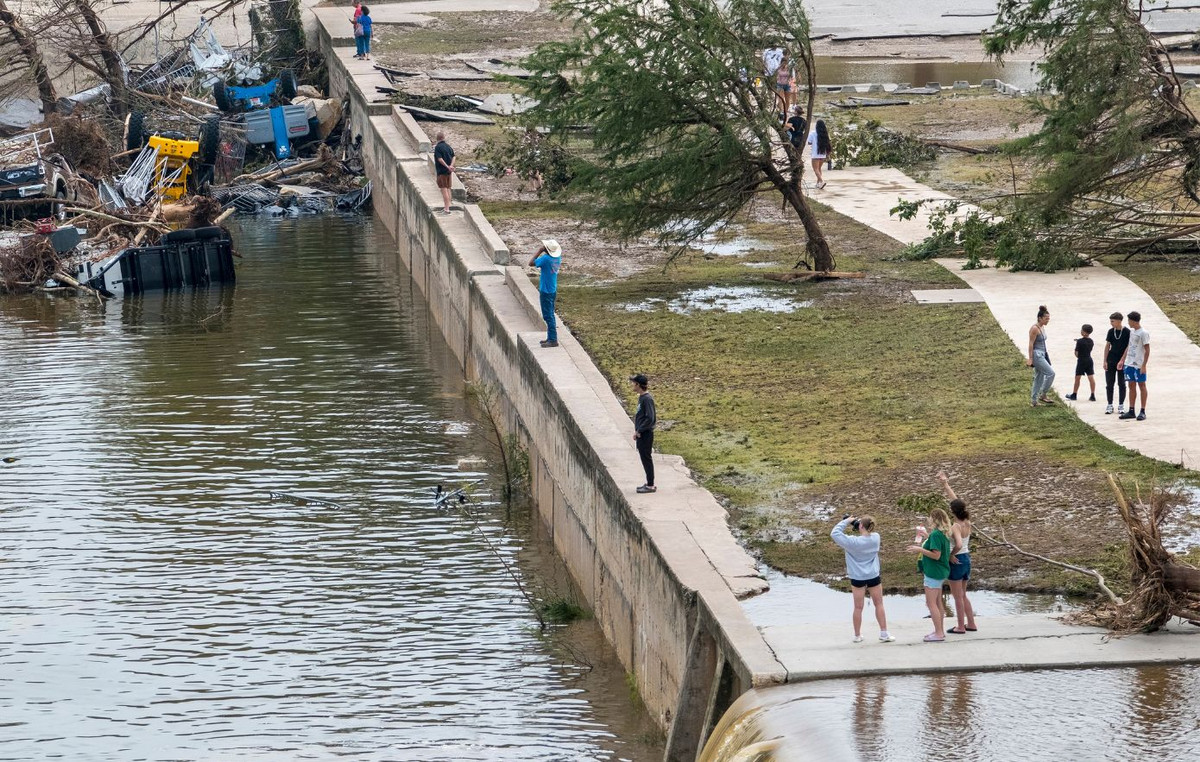The trees begin to sway, the sky darkens and suddenly you hear the distant sound of thunder. This is the sign that potential danger is coming. In fact, it’s probably within ten miles of you, according to the National Weather Service.
Don’t ignore this sound, because where there’s thunder, there’s lightning, and lightning can kill or damage in unexpected ways. This includes when you’re in the shower, in the bathtub, or even doing the dishes.
Since lightning can travel through pipes, “it’s best to avoid all types of water during a storm. Don’t shower, shower, wash dishes, or wash your hands,” notes the US Centers for Disease Control and Prevention (CDC).
“The risk of lightning passing through pipes can be lower with plastic pipes than with metal pipes. However, it is best to avoid any contact with pipes and running water during a storm to reduce the risk of being struck by lightning,” adds the CDC.
That’s not the only danger inside the house. Stay away from balconies, stay away from windows or doors, and “DO NOT lie down or lean on concrete floors,” the agency says.
Also, “DO NOT use anything plugged into an outlet, such as computers or other electronic equipment,” says the CDC.
“Stay away from corded phones. Cell phones and cordless phones are safe… if not plugged into an outlet via a charger.”
Hotter than the surface of the sun
Thunder is produced when lightning strikes heating the air around the lightning to “27,760°C, 5 times hotter than the surface of the Sun,” the National Weather Service said.
“Immediately after the flash, the air cools and contracts quickly. This rapid expansion and contraction (creates) the sound wave we hear like thunder.”
Lightning can be deadly in many ways. According to the CDC, a direct hit is usually fatal, but injuries such as blunt force trauma, skin injuries, and burns, as well as brain, muscle, and eye injuries, can occur when touching a car or metal object struck by lightning.
The current can also travel along the ground, bounce off a person or object, or even be ejected from objects close to the ground.
The weather service advises you to calculate the distance between you and the lightning, but from a safe place so you don’t risk being hit.” Count the number of seconds between the lightning and the sound of thunder, and then divide by 5″, every five seconds equals 1.6 kilometers, 15 seconds equals nearly 5 kilometers, and zero seconds means very close, the service said.
According to the CDC, most deaths and injuries occur when people are outside, especially during the summer months, at night and at night. About 180 people a year are injured by lightning and 10% of their people lose their lives.
People who work outdoors, especially in the Southeast, are most at risk. The CDC adds that Florida and Texas have the highest number of lightning-related deaths.
If you get caught in a storm while you’re away, “DO NOT fall to the ground. The lightning causes electrical currents along the surface of the ground that can be deadly from more than 30 meters away. Get to a safe place,” says the CDC.
“Avoid anything that increases your risk of being struck by lightning, such as being near or under tall trees. If there are no safe shelters in sight, get into a ball-like position: bring your feet together, squat your head between your knees, and cover your ears. But remember that this is the last resort. Find a safe haven first.”
Source: CNN Brasil
I am an experienced journalist and writer with a career in the news industry. My focus is on covering Top News stories for World Stock Market, where I provide comprehensive analysis and commentary on markets around the world. I have expertise in writing both long-form articles and shorter pieces that deliver timely, relevant updates to readers.







